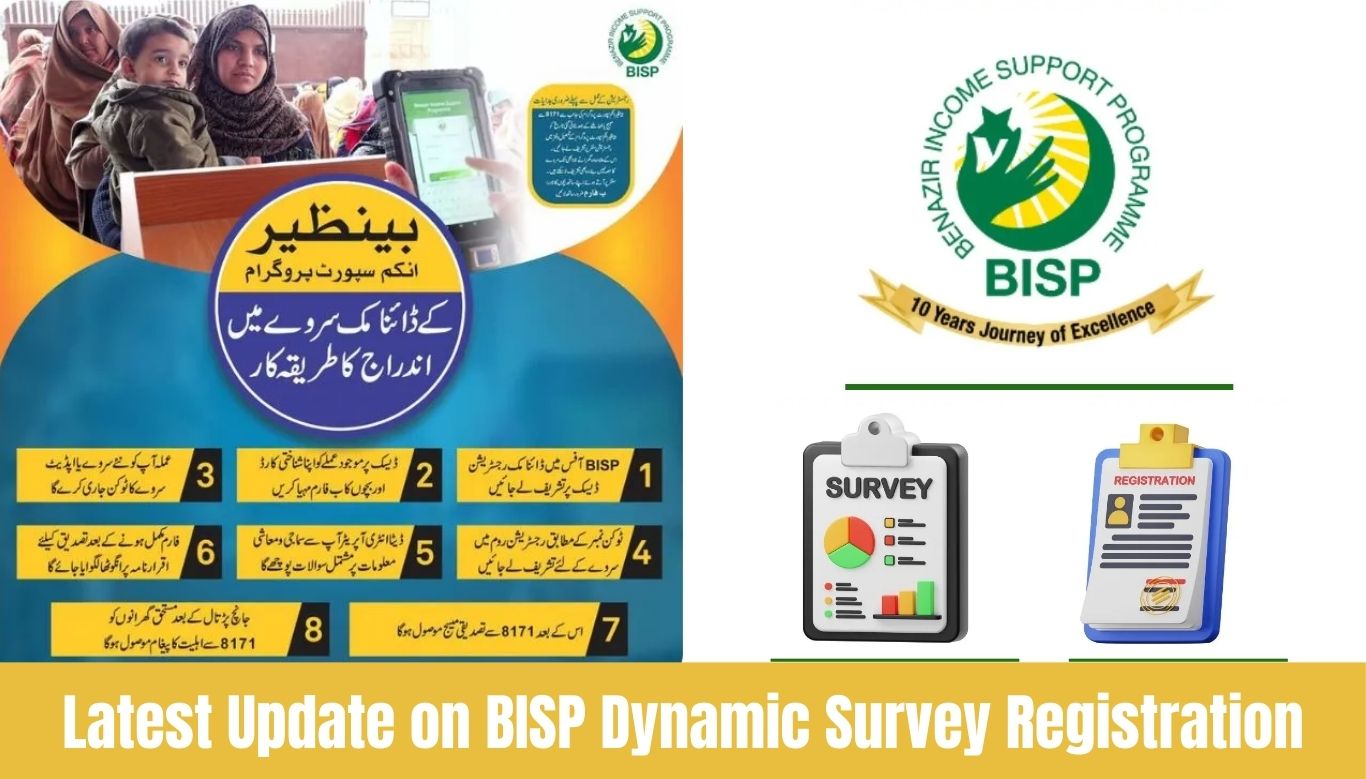ISLAMABAD — The Pakistani government has launched a new dynamic survey registration system for the 8171 Ehsaas Program, aiming to expand social protection coverage for vulnerable households across the nation in 2025.
The initiative, announced yesterday by the Poverty Alleviation and Social Safety Division, will implement a continuous registration mechanism that allows financially struggling families to apply for assistance year-round rather than during limited enrollment periods.
New Registration Process Unveiled
The dynamic survey registration methodology represents a significant shift from previous static enrollment systems that left many eligible families waiting months or years for assistance opportunities.
“This continuous registration approach ensures that vulnerable households can access critical support when they need it most, rather than waiting for predetermined survey periods,” said Dr. Amjad Ali, Director of Operations for the Ehsaas Program. “Our data indicates that circumstances can change rapidly for at-risk families, and our support systems must be equally responsive.”
Under the new system, citizens can initiate registration by sending their Computerized National Identity Card (CNIC) number to 8171 via SMS. The automated system will schedule a household survey within 30 days, conducted by trained field teams using digital data collection methods.
Expanded Eligibility Criteria
The 2025 program has also revised its eligibility parameters to better identify households in need:
| Criterion | Previous Threshold | 2025 Threshold |
|---|---|---|
| Household Income | Rs. 37,000/month | Rs. 45,000/month |
| Asset Ownership | No vehicle ownership | Limited vehicle value up to Rs. 700,000 |
| Property | No modern housing | Consideration of housing conditions rather than type |
| Family Size | Fixed scales | Adjustable calculations based on dependents |
“We’ve moved away from rigid exclusion criteria toward a more holistic assessment of household economic conditions,” explained Sadia Nawaz, Technical Lead for the Ehsaas Poverty Index. “This approach recognizes that poverty is multidimensional and cannot be accurately captured through simplistic measures alone.”
Digital Transformation of Social Protection
The dynamic survey registration system leverages Pakistan’s growing digital infrastructure to streamline enrollment and verification processes. Field teams will use tablet-based applications that operate offline in remote areas and sync data when connectivity becomes available.
This technological approach addresses a long-standing criticism of previous registration efforts, which often excluded families in remote or underserved areas where survey teams rarely ventured.
“The digital transformation of our social protection systems represents a crucial step toward ensuring no deserving family is left behind,” stated Federal Minister for Poverty Alleviation Tariq Mehmood during the program launch ceremony. “By combining technology with continuous enrollment opportunities, we can respond more effectively to changing economic circumstances facing Pakistani households.”
The system incorporates several anti-fraud measures, including biometric verification, cross-referencing with national databases, and algorithmic detection of suspicious application patterns.
Program Expansion and Funding
The Ehsaas Program, which began in 2019 as a consolidation of various social safety initiatives, continues to expand its scope and reach. The 2025 budget allocation for the program stands at Rs. 267 billion, representing a 15% increase from the previous fiscal year.
This expanded funding will support:
- Quarterly stipends for eligible households
- Emergency cash assistance during crises
- Educational scholarships for children from participating families
- Health insurance coverage through the Sehat Sahulat Program
- Interest-free loans for microenterprise development
“The 8171 program has evolved significantly since its inception,” noted economist Dr. Farah Naz of the Pakistan Institute of Development Economics. “What began as primarily a cash transfer mechanism has developed into a comprehensive approach to addressing intergenerational poverty through multiple interventions.”
Societal Impact and Economic Benefits
Independent evaluations of previous Ehsaas initiatives have documented positive outcomes including improved food security, increased school enrollment, and greater healthcare utilization among recipient households.
A 2024 study by the International Food Policy Research Institute found that Ehsaas beneficiaries were 27% less likely to reduce meal sizes during economic downturns compared to similarly situated non-beneficiary households.
“The program’s direct cash transfers inject liquidity into local economies, particularly in rural areas where consumer spending has significant multiplier effects,” said economic analyst Saeed Khan. “Each rupee distributed through the program generates approximately 1.6 rupees in local economic activity.”
How to Register
Eligible citizens interested in registering for the program should:
- Send their 13-digit CNIC number via SMS to 8171
- Await confirmation and survey appointment details
- Ensure all household members are present during the scheduled survey
- Prepare basic documentation including CNIC cards for adult household members
- Respond accurately to survey questions about income, assets, and living conditions
The Ehsaas Program has established a toll-free helpline (0800-26477) for citizens requiring assistance with the registration process or seeking information about application status.
“We encourage all potentially eligible households to initiate registration, even if they’re uncertain about qualification,” Dr. Ali emphasized. “The system is designed to make accurate determinations based on comprehensive household data.”
The dynamic survey registration will begin accepting applications nationwide starting May 15, 2025.
Background on the Ehsaas Program
The Ehsaas Program was launched in 2019 as Pakistan’s flagship poverty alleviation initiative, consolidating several previously fragmented social protection schemes. The name “Ehsaas,” meaning empathy or compassion in Urdu, reflects the program’s core philosophy of responding humanely to socioeconomic vulnerabilities.
The 8171 component specifically refers to the SMS-based registration and information system that serves as the primary interface between citizens and the program.
Since its inception, the program has registered over 14 million households and distributed approximately Rs. 650 billion in various forms of assistance. Independent evaluations have generally praised the program’s targeting accuracy while identifying areas for continued improvement in outreach to underserved populations.
As Pakistan continues to face economic challenges including high inflation and limited fiscal space, targeted social protection through initiatives like the Ehsaas Program remains crucial to the government’s strategy for mitigating extreme poverty and building household resilience.
